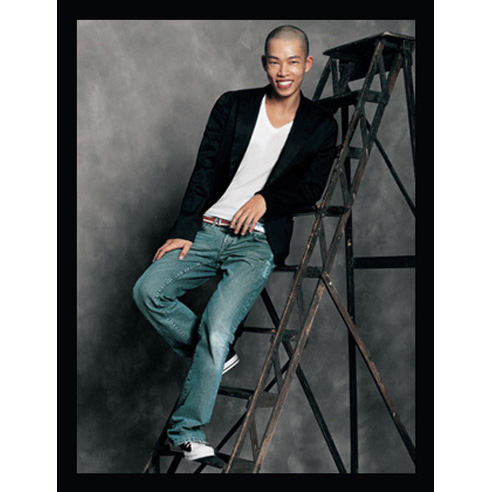Just last week, hundreds of UC Davis students marched on campus in protest of a windstorm of attacks on public education. These students were angry, passionate, determined, and wearing a diverse array of clothing.
In this photo that I took while the march continued down Russel Boulevard, you can get a sense for the casualness of fashion displayed at this protest. Plaid shirts, plain sweaters, backpacks, screen-printed t-shirts... typical fashion of Californian college students in 2010.
But the other day, one student suggested a different idea. In an e-mail to hundreds of students and community members (not to mention media and campus officials who are also subscribers of the large mailing list), one student suggested a difference dress code: business casual.
The idea is simple: instead of casual fashion associated with youth culture, at this particular protest, participants would wear dress shirts, pant suits, ties, sweaters - however people wanted to define "professional" attire. If professional attire is associated with political power, then perhaps protestors would have something to gain from dressing up as those in power.
As expected, the critiques to this idea were numerous. Wearing professional clothing promotes classism, some individuals might feel uncomfortable in professional attire, and of course - students should not have to dress up as those in power in order to appear credible in their appeals to the higher-ups.
Although I understand and, to some extent, agree with these critiques, I can't help but feel intrigued at the thought of a couple hundred UC Davis students in dress clothes marching through the City of Davis. And imagine the photographs of students in pinstripe jackets being beaten by police officers decked out in riot gear. Masks and batons against top hats and bow ties.
To conclude her book Fashion-ology, Kawamura explains that "fashionology" deals not only with individuals, but with the social institutions of the fashion world and their effects upon the social and economic status of many individuals when fashion is used as a symbolic strategy. There is nothing about business casual clothing that is inherently connected with political power. Still, because we believe in the association between political power and "professional" dress clothes, such fashion is powerful. Some students may not feel inclined to participate in a protest where everyone was expected to wear business casual clothing. But for the students who would feel comfortable participating - damn, just imagine the media attention for such event.
----------------------------------------
I have a job interview next week with Teach for America. I think I am going to need a new pair of dress socks for the occasion. Luckily, this is the final week of the Compact challenge for this class. Here is a list of things that I have bought this quarter that were in violation of the challenge:
- A book of word search puzzles from Dollar Tree (that I never used, and thus, did not need to buy)
... Actually, that's the only thing that I bought this quarter, aside from food and late-night beverages (that I don't think should count). I didn't expect it to be a difficult challenge... and it really wasn't. Like I mentioned in earlier blogs, I don't have a lot of money to begin with. I'm used to only spending my money on rent and food, and helping my mom whenever I need to. I will admit, however, that in doing research for the group project, I got a little excited going to all the clothing websites to check for prices of certain hats, shoes, etc. When I get my refund check from financial aid, my credit card and I are goin' to town. Otherwise, I'm glad to see that over a three month period, I have been able to go without purchasing any new clothing. I am now equipped with the knowledge that I don't have to consume as much as society would probably hope I did...
----------------------------------------
Mo Torres - Blog #10 !
References:
Yuniya Kawamura, Fashion-ology: An Introduction to Fashion Studies (Oxford: Berg, 2006), 105.











 does this remind anyone of the Qiapao? ohhh yeah..... so, this fashion show had dozens of dresses made entirely up of condoms. From Qiapaos to wedding dresses, they were all made of condoms. When you think about it, clothing can be made from anything; Kawamura talks about how fashion in postmodern societies can be "anything and everything" (Kawamura 106) and this fashion show is a true statement of how fashion can be anything and everything.
does this remind anyone of the Qiapao? ohhh yeah..... so, this fashion show had dozens of dresses made entirely up of condoms. From Qiapaos to wedding dresses, they were all made of condoms. When you think about it, clothing can be made from anything; Kawamura talks about how fashion in postmodern societies can be "anything and everything" (Kawamura 106) and this fashion show is a true statement of how fashion can be anything and everything. 













